How to clean mirrors — and all of the mistakes you should avoid to ensure a streak-free finish
Transform your mirrors from grubby to gleaming with our expert tips
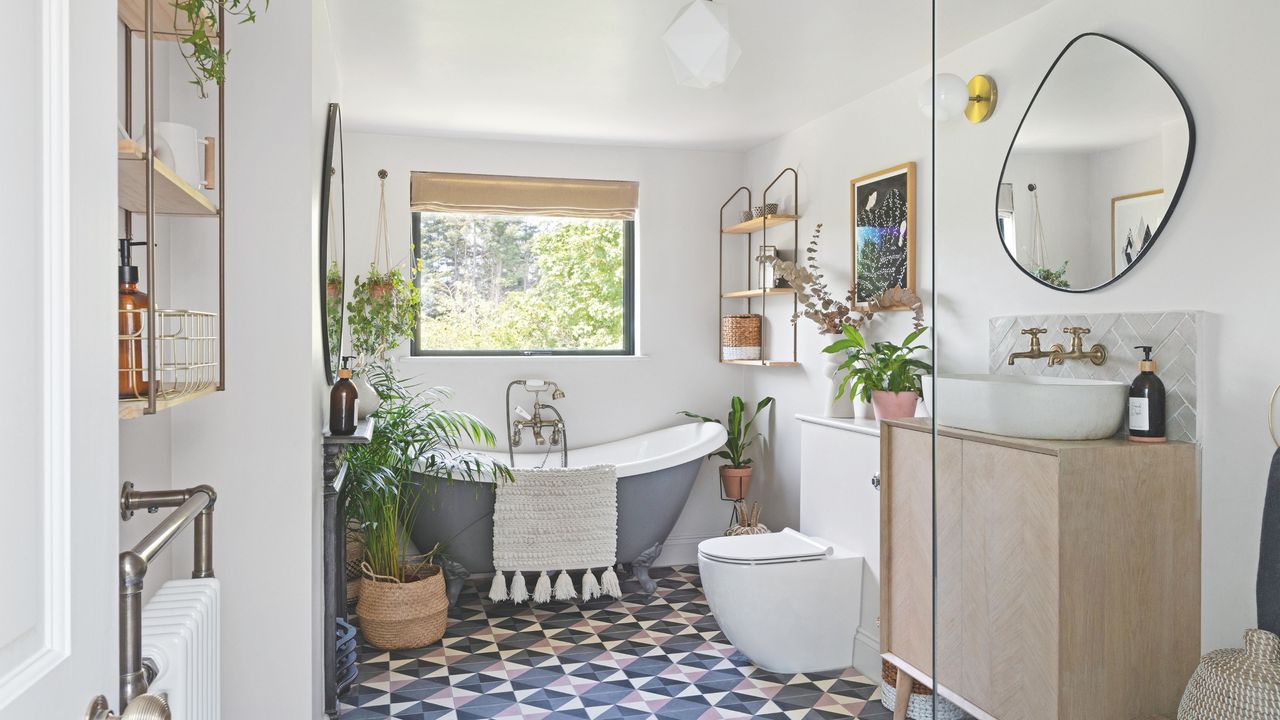
Cleaning the mirrors in your house can be one of the more frustrating tasks to tick off your to-do list, as often, they can still be a streaky mess after giving them what we think is a good clean. Sometimes they'll look even worse than they did before, which is nothing short of infuriating. The only way to avoid this is to learn how to clean mirrors without streaks properly.
But as is also the case with cleaning windows, there’s a knack to ensuring a gleaming finish every time - especially if you want to clean the everyday dirt, grime, limescale, and even toothpaste stains that often build up on this home decor addition.
So, whether you want to bring your hallway mirror ideas to life or you just want to clean every inch of your bathroom, knowing how to clean mirrors is a handy skill to have. And this step-by-step guide will ensure you nail the technique in no time.
What you'll need
- White vinegar - like this Hexeal White Vinegar 5L from Amazon
- Spray bottle - like this 1 Litre Empty Reusable Trigger Spray Bottle from Lakeland
- Eco-friendly washing up liquid - like this Ecover Washing Up Liquid from Amazon
- Soft cleaning brush - like this OXO Saffron Deep Clean Brush Set from Dunelm
- Cleaning cloths - likes these SEEP Eco All Purpose Bamboo Cloths from Amazon
- Rubbing alcohol - like this All Purpose Rubbing Isopropanol from B&Q
- Warm water
Step-by-step
1. If you can, remove the mirror
Whether you’ve used a mirror to make a small living room look bigger or your bathroom mirror is looking a bit worse for wear, there’s no point making this cleaning task harder for yourself. That’s why Laura Harnett, founder of eco-friendly cleaning brand Seep suggests, ‘First, take the mirror off the wall and place it on a flat surface.’

Of course, we understand that this is often easier said than done, but if you can, removing a mirror will make it so much easier to clean as you can do so without accidentally knocking it off the wall. You probably don’t want seven years of bad luck, after all!

Laura Harnett is the founder of eco cleaning brand, Seep. She is determined to help as many people stop using unnecessary plastic as possible by encouraging them to switch to plastic free cleaning tools. She also recently appeared on Dragons’ Den and landed not one, but two Dragons to invest in her business.
2. Clean the frames
Most people focus on the glass when cleaning mirrors, but the frames can get just as grubby and dusty. So, you need to give them some TLC every now and then and the damp dusting vs dry dusting debate comes heavily into play here.
To clean mirror frames, Laura says all you need is a damp cloth and some eco-friendly washing up liquid. ‘Don’t create suds as these will dry to leave milky streaks,’ she says, ‘and don’t use an overly wet cloth, just slightly damp to ensure the dust sticks to it and is lifted off and trapped in the cloth.’

To get into all of the nooks and crannies of the frames, you can either use a cleaning brush or some cotton buds like these UpCircle Bamboo Cotton Buds from Amazon. And if that doesn’t work, Laura has another suggestion - and that involves one of the best vacuum cleaners.
‘If the mirror has an ornate frame then using a vacuum with a brush adapter also works well to suck up the dust from its grooves,’ she explains.
3. Spot clean tougher stains
Mirrors, particularly bathroom mirrors, can harbour all kinds of dried-on stains - from toothpaste splatters to limescale deposits. If you find yourself faced with tougher stains, you should first spot-clean them by cleaning with vinegar.
Cleaning expert Matthew Harrison at PriceYourJob.co.uk, advises, ‘When cleaning a mirror, you’ll want to start by spot cleaning any visible stains or gunk with white vinegar and a clean cloth.’
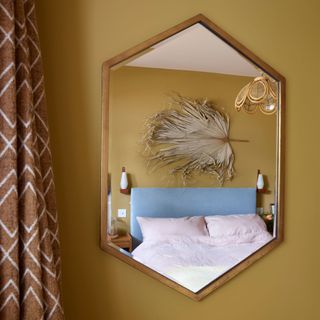
If the stain is particularly stubborn, you may have to let the white vinegar sit on the stain for a few minutes before wiping off with the cloth. If it’s a smaller, stubborn stain, you could once again use a cotton bud.
If this still doesn’t rid your mirror of stains, Matthew says, ‘You may need to use some rubbing alcohol to remove the stubborn dirt. Spot clean difficult areas with rubbing alcohol and a cloth or cotton pads.’
4. Turn your attention to the glass
When you’ve tackled the smaller stains, you can then turn your attention to cleaning the rest of the glass. For this step, you’ll need to mix a 1:1 ratio of water and white vinegar in a spray bottle.
If you want to prevent future limescale build-up on your mirrors, though, Laura suggests using purified or filtered water for this task. She says, ‘Purified water works even better as tap water contains minerals such as calcium and sodium which can leave streaks on the glass if not wiped off thoroughly.’
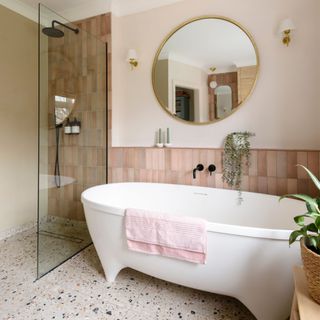
So, now may be the perfect time to buy and install the Brita Tap Cartridge from Argos under your sink so you constantly have filtered water on tap. There’s a technique to cleaning mirrors with this water and white vinegar concoction, though.
Liam Spencer, owner of Northallerton Glass, says, ‘When cleaning the mirror, wipe side to side or vertical motions instead of going in a circle. This is better as it will avoid the build-up of static electricity caused by circular motions that can attract dust to the mirror's surface. Horizontal or vertical motions will also match the shape of the mirror better.’
5. Check for any lingering grime
The above steps should be enough to clean your mirrors, but it’s still a good idea to take a step back and double-check for any lingering grime before you pack your cleaning products away. Matthew says, ‘Once the mirror is dry, inspect it from the side to see if you can see any missed areas or streaks. These can then be spot cleaned and buffed out.’
If you’re still not happy with the results, you may have to clean your mirror twice. However, cleaning your mirrors just once should be enough to successfully clean the dust and grime off it.
Mistakes to avoid when cleaning a mirror
Following this step-by-step process to clean mirrors is a quick and effective way to get the job done, but it’s still possible to make a few mistakes during this cleaning task. So, these are the mistakes to avoid when cleaning a mirror.
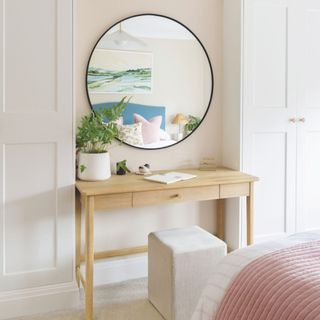
1. Don’t use soaps or scented products
It’s always best to opt for natural cleaning hacks when cleaning mirrors and avoid any products that contain soaps or scented products. If you do use these, you may find that you don’t get the streak-free finish you’re after.
Liam explains, ‘Cleaners that contain soap, scents or dyes can actually leave behind residue that causes streaks on the surface of a mirror, and may leave behind deposits of oil or wax. These ingredients cannot evaporate away and may be hard to wipe off, so check if the cleaner you are using has any unneeded additives.’
2. Don’t use newspaper
Many people swear by using newspaper for a streak-free finish when cleaning windows and mirrors, but this hack may not work as effectively as you’d like.
‘Newspaper is sometimes suggested for glass surfaces instead of using a cloth,’ says Laura, ‘but this can leave streaks from the ink and tiny fragments of paper which is frustrating, so stick to a cloth.’
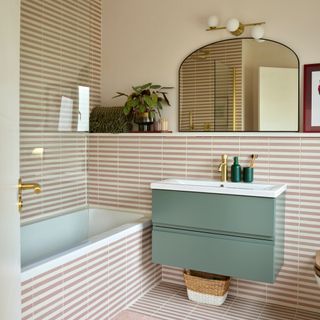
3. Don’t clean on a sunny day
Just as you should never clean windows outside on a sunny day, the same goes for indoor (or even outdoor) mirrors. In fact, doing so will make the process so much harder for yourself.
This is echoed by Laura, who says, ‘Don’t clean mirrors, or any glass surfaces such as windows, on a very bright sunny day as this will make marks harder to see and mean you have to do the job twice.’ It’ll also mean that the cleaning solution may dry before you have the chance to actually use it.
4. Don’t scrub the glass
It’s understandable that you might want to give extra grime and scuffs an extra buff when cleaning mirrors, but you should avoid doing this at all costs. Otherwise, you may find yourself buying a new mirror earlier than you’d like.
Liam says, ‘Although difficult stains may require extra attention, you should not try to scrub these. Instead, it is better to spot clean these areas before cleaning the entire mirror. When spot cleaning, do not press too hard or scrub, as this will damage or scratch the surface of the mirror.’
FAQs
How do you clean cloudy mirrors?
Mirrors tend to become cloudy as a result of residue build-up, whether that be a layer of dust and grime or leftover cleaning solution. Because of this, it’s important to clean away all of this residue to clean a cloudy mirror.
The best way to do this is with a solution of white vinegar and water, but it may be that rubbing alcohol does the job better. So, see what works for you and maintain a strict cleaning regime after that.
Why do my mirrors look smeared after cleaning?
If your mirrors look smeared after cleaning, it’s highly likely that you didn’t clean it effectively enough. It may be that you didn’t wipe away all of the cleaning solution, or you used an improper technique that smeared the cleaning solution around the glass. As a result it left smear marks when it dried instead of offering a streak-free finish.
To combat this, clean your mirror again using proper mirror cleaning tools and using the proper mirror cleaning technique.
If you follow this guide, you should have streak-free mirrors in no time! But if you have any other mirror cleaning hacks you swear by, let us know in the comments!
Get the Ideal Home Newsletter
Sign up to our newsletter for style and decor inspiration, house makeovers, project advice and more.
Jennifer is the Deputy Editor (Digital) for Homes & Gardens online. Prior to her current position, she completed various short courses a KLC Design School, and wrote across sister brands Ideal Home, LivingEtc, 25 Beautiful Homes, Country Homes & Interiors, and Style at Home.
- Katie SimsContributor
- Lauren BradburyContent Editor (House Manual)
You must confirm your public display name before commenting
Please logout and then login again, you will then be prompted to enter your display name.
-
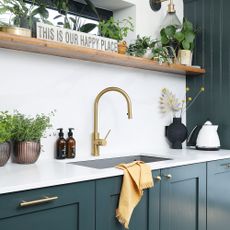 Every homes editor I know owns this Joseph Joseph kitchen essential, and I've finally been persuaded to buy one too
Every homes editor I know owns this Joseph Joseph kitchen essential, and I've finally been persuaded to buy one tooI've never known a washing up bowl have such a cult following
By Rebecca Knight
-
 5 things you need to know before installing a porch to avoid an expensive mistake
5 things you need to know before installing a porch to avoid an expensive mistakeCheck these things off before diving in to avoid and expensive mistake when installing a porch
By Holly Reaney
-
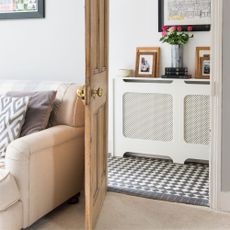 This energy mistake could cost you hundreds when moving house, warn energy experts
This energy mistake could cost you hundreds when moving house, warn energy expertsYou won't want to leave this small task off your moving house checklist
By Kezia Reynolds